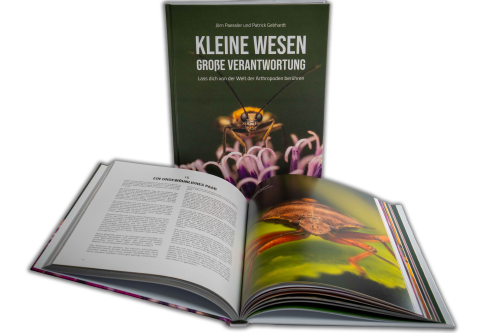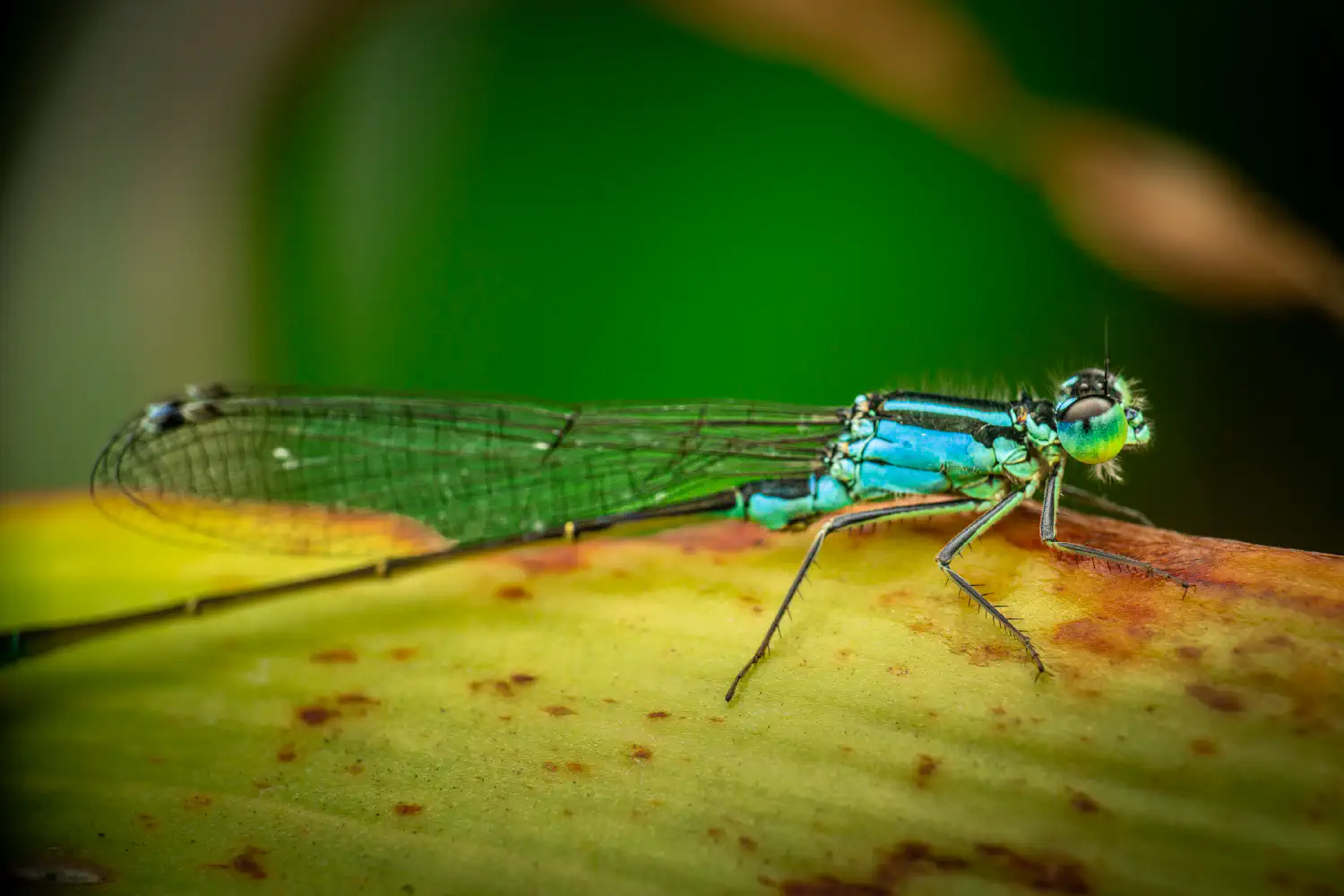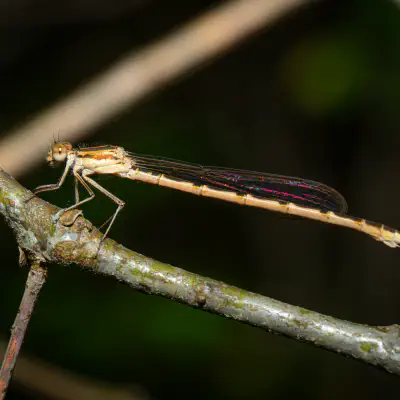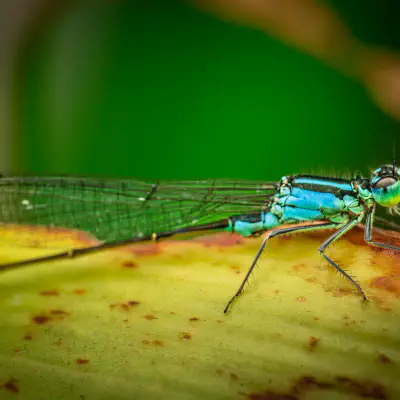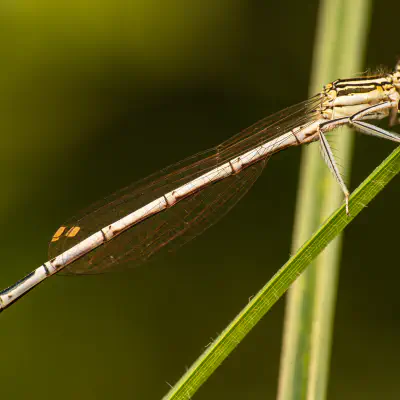Damselflies Lat. “Zygoptera“
Damselflies are insects of the suborder Zygoptera in the order Odonata. They are similar to dragonflies, which constitute the other odonatan suborder, Anisoptera, but are smaller, have slimmer bodies, and most species fold the wings along the body when at rest. An ancient group, damselflies have existed since at least the Lower Permian, and are found on every continent except Antarctica.
Hierarchy
Classification
The Zygoptera are an ancient group, with the earliest fossils dating to the Kimmeridgian age of the Late Jurassic, around 152 million years ago. Well-preserved Eocene damselfly larvae and exuviae are known from fossils preserved in amber in the Baltic region. Molecular analysis in 2021 confirms that most of the traditional families are monophyletic, but shows that the Amphipterygidae, Megapodagrionidae and Protoneuridae are paraphyletic and will need to be reorganised. The Protoneuridae in particular is shown to be composed of six clades from five families. The result so far is 27 damselfly families, with seven more likely to be created. The discovered clades did not agree well with traditional characteristics used to classify living and fossil Zygoptera such as wing venation, so fossil taxa will need to be revisited. The results of the analysis are show in the phylogenetic tree shown below, with the seven new or resurrected families marked with an asterisk:
General description
The general body plan of a damselfly is similar to that of a dragonfly. The compound eyes are large but are more widely separated and relatively smaller than those of a dragonfly. Above the eyes is the frons or forehead, below this the clypeus, and on the lower lip or labium, an extensible organ used in the capture of prey. The top of the head bears three simple eyes (ocelli), which may measure light intensity, and a tiny pair of antennae that serve no olfactory function but may measure air speed. Many species are sexually dimorphic; the males are often brightly coloured and distinctive, while the females are plainer, cryptically coloured, and harder to identify to species. For example, in Coenagrion, the Eurasian bluets, the males are bright blue with black markings, while the females are usually predominantly green or brown with black. A few dimorphic species show female-limited polymorphism, the females being in two forms, one form distinct and the other with the patterning as in males. The ones that look like males, andromorphs, are usually under a third of the female population but the proportion can rise significantly and a theory that explains this response suggests that it helps overcome harassment by males. Some Coenagrionid damselflies show male-limited polymorphism, an even less understood phenomenon. In general, damselflies are smaller than dragonflies, the smallest being members of the genus Agriocnemis (wisps). However, members of the Pseudostigmatidae (helicopter damselflies or forest giants) are exceptionally large for the group, with wingspans as much as 19 cm (7+1⁄2 in) in Megaloprepus and body length up to 13 cm (5 in) in Pseudostigma aberrans. The first thoracic segment is the prothorax, bearing the front pair of legs. The joint between head and prothorax is slender and flexible, which enables the damselfly to swivel its head and to manoeuvre more freely when flying. The remaining thoracic segments are the fused mesothorax and metathorax (together termed the synthorax), each with a pair of wings and a pair of legs. A dark stripe known as the humeral stripe runs from the base of the front wings to the second pair of legs, and just in front of this is the pale-coloured, antehumeral stripe. The forewings and hindwings are similar in appearance and are membranous, being strengthened and supported by longitudinal veins that are linked by many cross-veins and that are filled with haemolymph. Species markers include quadrangular markings on the wings known as the pterostigma or stigma, and in almost all species, there is a nodus near the leading edge. The thorax houses the flight muscles. Many damselflies (e.g. Lestidae, Platycnemidae, Coenagrionidae) have clear wings, but some (Calopterygidae, Euphaeidae) have coloured wings, whether uniformly suffused with colour or boldly marked with a coloured patch. In species such as the banded demoiselle, Calopteryx splendens the males have both a darker green body and large dark violet-blue patches on all four wings, which flicker conspicuously in their aerial courtship dances; the females have pale translucent greenish wings. The abdomen is long and slender and consists of ten segments. The secondary genitalia in males are on the undersides of segments two and three and are conspicuous, making it easy to tell the sex of the damselfly when viewed from the side. The female genital opening is on the underside between segments eight and nine. It may be covered by a subgenital plate, or extended into a complex ovipositor that helps them lay eggs within plant tissue. The tenth segment in both sexes bears cerci and in males, its underside bears a pair of paraprocts. Damselflies (except spreadwings, Lestidae) rest their wings together, above their bodies, whereas dragonflies rest with their wings spread diametrically apart; the spreadwings rest with their wings slightly apart. Damselflies have slenderer bodies than dragonflies, and their eyes do not overlap. Damselfly nymphs differ from dragonflies nymphs in that the epiproct and pair of paraprocts at the tip of their abdomen has been modified into caudal gills, in addition to being able to absorb oxygen through the wall of their rectum, whereas dragonflies breathe through internal rectal gills only. Damselfly nymphs swim by fish-like undulations, the gills functioning like a tail. Dragonfly nymphs can forcibly expel water in their rectum for rapid escape.
Distribution and diversity
Odonates are found on all the continents except Antarctica. Although some species of dragonfly have wide distributions, damselflies tend to have smaller ranges. Most odonates breed in fresh-water; a few damselflies in the family Caenagrionidae breed in brackish water (and a single dragonfly species breeds in seawater). Dragonflies are more affected by pollution than are damselflies. The presence of odonates indicates that an ecosystem is of good quality. The most species-rich environments have a range of suitable microhabitats, providing suitable water bodies for breeding. Although most damselflies live out their lives within a short distance of where they were hatched, some species, and some individuals within species, disperse more widely. Forktails in the family Coenagrionidae seem particularly prone to do this, large male boreal bluets (Enallagma boreale) in British Columbia often migrating, while smaller ones do not. These are known to leave their waterside habitats, flying upwards till lost from view, and presumably being dispersed to far off places by the stronger winds found at high altitudes. In this way they may appear in a locality where no damselflies were to be seen the day before. Rambur’s forktail (Ischnura ramburii) has been found, for example, on oil rigs far out in the Gulf of Mexico. The distribution and diversity of damselfly species in the biogeographical regions is summarized here. (There are no damselflies in the Antarctic.) Note that some species are widespread and occur in multiple regions.
Overall, there are about 2942 extant species of damselflies placed in 309 genera.
Biology
Adult damselflies catch and eat flies, mosquitoes, and other small insects. Often they hover among grasses and low vegetation, picking prey off stems and leaves with their spiny legs (unlike dragonflies which prefer catching flying prey). Although predominantly using vision to locate their prey, adults may also make use of olfactory cues. No species are known to hunt at night, but some are crepuscular, perhaps taking advantage of newly hatched flies and other aquatic insects at a time when larger dragonflies are roosting. In tropical South America, helicopter damselflies (Pseudostigmatidae) feed on spiders, hovering near an orb web and plucking the spider, or its entangled prey, from the web. There are few pools and lakes in these habitats, and these damselflies breed in temporary water bodies in holes in trees, the rosettes of bromeliads and even the hollow stems of bamboos. The nymphs of damselflies have been less researched than their dragonfly counterparts, and many have not even been identified. They choose their prey according to size and seem less able to overpower larger prey than can dragonfly nymphs. The major part of the diet of most species appears to be crustaceans such as water fleas.
Conservation
Conservation of Odonata has usually concentrated on the more iconic suborder Anisoptera, the dragonflies. However, the two suborders largely have the same needs, and what is good for dragonflies is also good for damselflies. The main threats experienced by odonates are the clearance of forests, the pollution of waterways, the lowering of groundwater levels, the damming of rivers for hydroelectric schemes and the general degradation of wetlands and marshes. The clearance of tropical rainforests is of importance because the rate of erosion increases, streams and pools dry up and waterways become clogged with silt. The presence of alien species can also have unintended consequences. In Hawaii, the introduction of the mosquitofish (Gambusia affinis) was effective in controlling mosquitoes but nearly exterminated the island’s endemic damselflies. The ancient greenling Hemiphlebia mirabilis has been an important flagship species for conservation action in preserving its habitat in Australia.
In culture
Fishing flies that mimic damselfly nymphs are sometimes used in wet-fly fishing, where the hook and line are allowed to sink below the surface. Damselflies have formed subjects for personal jewellery such as brooches since at least 1880. Damselfly is a 2005 short film directed by Ben O’Connor. Damselfly is the title of a 2012 novel in the Faeble series by S. L. Naeole and of a 2018 novel by Chandra Prasad. Modern poems with the damselfly as a subject include a 1994 poem by August Kleinzahler, which contains the lines “And that blue there, cobalt / a moment, then iridescent, / fragile as a lady’s pin / hovering above the nasturtium?” The poet John Engels published “Damselfly, Trout, Heron” in his 1983 collection Weather-Fear: New and Selected Poems.
See also
List of damselflies of the world List of odonates of Sri Lanka Protozygoptera, a fossil group that somewhat resembled the damselflies
General and cited sources
Berger, Cynthia (2004). Dragonflies. Stackpole Books. p. 2. ISBN 978-0-8117-2971-0. Dijkstra, Klaas-Douwe B. (2006). Field Guide to the Dragonflies of Britain and Europe. British Wildlife Publishing. ISBN 978-0-9531399-4-1. Paulson, Dennis (2009). Dragonflies and Damselflies of the West. Princeton University Press. ISBN 978-1-4008-3294-1. Trueman, John W. H.; Rowe, Richard J. (2009). “Odonata”. Tree of Life. Archived from the original on 21 November 2010. Retrieved 25 February 2015.
External links
Tree of Life: Odonata Dragonflies and damselflies on the UF / IFAS Featured Creatures Web site Minnesota Dragonfly Society: Biology and Ecology
Ancestry Graph
Further Information
„Damselflies“ on wikipedia.org
„Damselflies“ on iNaturalist.org
Copyright

This article uses material from the Wikipedia article Zygoptera the free encyclopedia Wikipedia which is released under Creative Commons Attribution-ShareAlike 4.0 International License). On Wikipedia a list of authors is available.

Little beings in print
Order our calendars and books today!
Compiled with love. Printed sustainably. Experience our little beings even more vividly in print. All our publications are available for a small donation.
